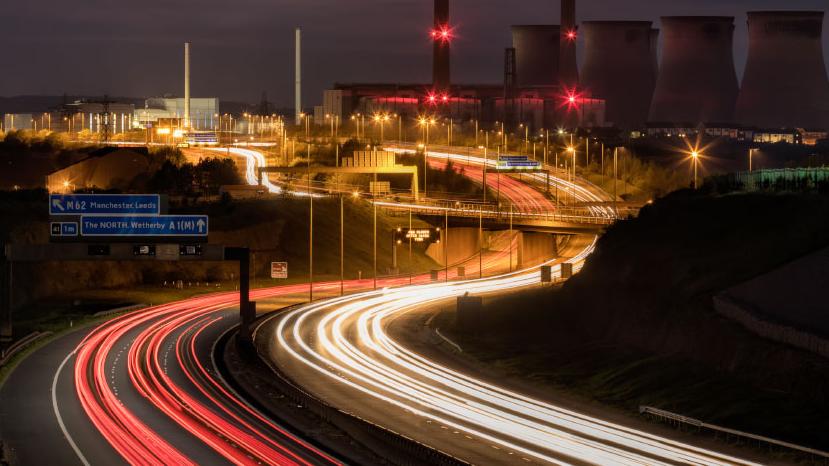
September 2025 Newsletter
Our recent access decisions announced at the start and end of July illustrate the opportunities and challenges inherent in managing our railway infrastructure to best serve passengers, freight customers, and the broader economy.
These decisions have brought significant developments across key corridors.
On the East Coast Main Line, we've approved additional services for three open access operators from December 2025, promising enhanced connectivity between London King's Cross and destinations including Glasgow, Hull and Newcastle. These approvals demonstrate how balanced consideration of competing applications can deliver meaningful benefits for passengers while protecting taxpayers and accommodating planned service uplifts by other operators.
The need for difficult choices was evidenced by our earlier rejection of three applications for the West Coast Main Line, including the proposed Wrexham, Shropshire and Midlands Railway service from London Euston to Wrexham General. These decisions demonstrate the importance that we, as the independent regulator, place on striking the right balance between promoting competition and protecting service performance for existing users.
Meanwhile, we are progressing towards a decision on access at Temple Mills International depot - a crucial facility for the development of UK-to-continental Europe rail services. Following applications from multiple potential operators, our independent capacity assessment found that there is some capacity at Temple Mills for more trains to be serviced, stabled and maintained there.
We are now assessing detailed proposals from Eurostar and potential new users of Temple Mills before we determine the best use of this critical infrastructure. We expect to make a decision at the end of October.
All these developments collectively illustrate the importance of robust, evidence-based decision-making, to ensure growing appetite for new services is carefully weighed against value for taxpayers, operational realities and existing commitments. As we move forward, rail's ability to deliver improved connectivity while maintaining reliable, punctual services will depend on continued collaboration between operators, infrastructure managers and regulators in making the most effective use of our railway capacity.
Martin Jones
Deputy Director, Access, Licensing & International
Top stories
A decade working for better highways
This year marks a significant milestone as we reflect on our first decade of regulating England's strategic road network.
Since the transformative Infrastructure Act 2015, a new regulatory framework has fundamentally changed how the country's motorways and major A-roads are managed, funded and held to account, bringing greater certainty and long-term planning to a network that supports sectors representing 7.6 million jobs and £410 billion of annual economic value.
ORR’s outcomes-focused, risk-based approach has delivered tangible results, including over £3.2 billion in efficiency savings and a 39% reduction in network casualties compared to the baseline the Government measures against from 2005-2009.
As we continue to advise government on the next Road Investment Strategy (RIS3), which was published in draft earlier this week, the focus remains on ensuring deliverable priorities within available funding whilst supporting economic growth. More is explained here.
Enhanced public transparency through new performance dashboards on orr.gov.uk will provide road users, communities and taxpayers with greater insight into how the strategic road network serves their needs, demonstrating our continued commitment to accountability and proportionate regulation.
HS1 Annual Report: Strong Train Performance, But Station Asset Failures Persist
We have published our annual report on London St. Pancras High Speed, formerly known as High Speed 1 (HS1), which notes significantly improved train performance with delays reduced to one in every 400 services, and this despite an 8% increase in traffic volumes.
However, we have required the company behind the link from St Pancras to the Channel Tunnel, London St. Pancras Highspeed, to improve its management of station assets, particularly lifts and escalators, this following safety incidents including one at Ebbsfleet International Station. We are also urging better recovery procedures from major incidents and enhanced asset condition forecasting and will continue to monitor these areas closely as the network approaches two decades of operation
Lea Green Station Opens
We have authorised significant upgrades to Lea Green station in St Helens, Merseyside, which opened on 18th August, marking an important milestone for improving rail connectivity in the region.
The comprehensive improvements include a new station building replacing the previous 2000 construction, an integrated multistorey car park that more than doubles parking capacity, improved forecourt and public spaces, upgraded passenger information systems, and various other enhancements.
We worked closely with Network Rail's Safety Review Panel to support Northern, which operates the station on behalf of Merseytravel, through the authorisation process, ensuring all standards for health and safety, accessibility, environmental protection, and reliability were met.
Blogs
Strong appetite to invest in rail but barriers hold back market
Following a request from HM Treasury as part of the government's mission to increase economic growth, we launched a ‘deep dive’ review of our Rail Network Investment Framework in Spring 2025, engaging directly with around 200 stakeholders including investors, suppliers, and key organisations through surveys, bilateral meetings, and industry roundtables.
Our review revealed strong appetite to invest in the rail sector, but identified several persistent barriers holding the market back, including a lack of clear policy direction on where private capital is encouraged, limited visibility of long-term investment pipelines, absence of established commercial models, and complex delivery pathways with uncertain planning and approval processes.
Based on these findings, we are now moving into Phase 2 of our project to update the Investment Framework by November 2025, working to clarify risk allocation, expand guidance on specific asset types, make the investment journey more accessible, and review standard contractual agreements to better support private and third-party investment in delivering a more modern rail network.
Statistics
Since the last newsletter we have published the following statistics:
- Rail Fares Index – Annual (2025)
- Occupational Health – Annual (2024-25)
- Passenger satisfaction with complaints handling - Annual (2024-25)
- Train Operating Company key statistics - Annual (2024-25)


